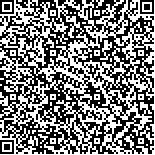附件
|
| 引用本文: | 冯玉静,隆浩,黄银洲,王洪娇,王乃昂,高磊,沈吉.毛乌素沙地东南缘全新世湖相地层石英和钾长石释光测年对比.湖泊科学,2015,27(3):535-547. DOI:10.18307/2015.0322 |
| FENG Yujing,LONG Hao,HUANG Yinzhou,WANG Hongjiao,WANG Naiang,GAO Lei,SHEN Ji.Luminescence dating of Holocene lacustrine sediments from the southeastern Mu Us sandy land:Comparison of quartz OSL and K-feldspar pIRIR150 ages. J. Lake Sci.2015,27(3):535-547. DOI:10.18307/2015.0322 |
|
| |
|
|
| 本文已被:浏览 10367次 下载 6667次 |

码上扫一扫! |
|
|
| 毛乌素沙地东南缘全新世湖相地层石英和钾长石释光测年对比 |
|
冯玉静1,2, 隆浩2, 黄银洲1, 王洪娇1, 王乃昂1, 高磊2, 沈吉2
|
|
1.兰州大学资源环境学院, 兰州 730000;2.中国科学院南京地理与湖泊研究所湖泊与环境国家重点实验室, 南京 210008
|
|
| 摘要: |
| 采集来自毛乌素沙地东南缘巴图湾、大沟湾和三岔河等3处典型湖相地层出露点的3个样品,分别提取石英和钾长石矿物组分,采用小片技术(样品直径2 mm)进行释光年代测试,并将两种矿物年代结果进行对比研究. 应用单片再生剂量(SAR)流程测试了石英样品的等效剂量(预热温度选为260℃). 剂量恢复实验和光释光特性显示,SAR流程测试条件选择合适,样品沉积前光释光信号晒退完全,说明石英年代结果可靠. 另外,应用两步红外激发(激发温度分别为50℃和150℃)的单片再生剂量流程(post-infrared infrared-stimulated luminescence,简写为pIRIR流程)测试钾长石样品的等效剂量,剂量恢复实验和释光特性等各项检验均符合要求,剩余剂量在-0.2~0.026 Gy之间,可忽略不计. 钾长石的pIRIR150信号异常衰减速率为0.55~1.71(%/decade),因造成的误差较小,故无需对年代结果进行校正.3处湖相地层的石英年代分别为11.3±0.9、6.5±0.6、2.7±0.2 ka BP,钾长石pIRIR150年代分别为10.0±0.7、6.9±0.5、2.4±0.2 ka BP,两者在误差范围内一致,说明毛乌素沙地东南缘的全新世湖相沉积物适合用钾长石pIRIR150流程进行释光测年. 本研究为毛乌素沙地部分样品因石英信号较弱而无法测年问题提供了解决办法,也为该区域全新世,尤其是历史时期(近2000年)以来的环境变化研究提供了年代学支撑. |
| 关键词: 毛乌素沙地 湖相沉积 石英 钾长石 光释光测年 全新世 |
| DOI:10.18307/2015.0322 |
| 分类号: |
| 基金项目:国家自然科学基金项目(41101187,41271002,41430530)和教育部人文社科一般项目(10YJCZH053)联合资助. |
|
| Luminescence dating of Holocene lacustrine sediments from the southeastern Mu Us sandy land:Comparison of quartz OSL and K-feldspar pIRIR150 ages |
|
FENG Yujing1,2, LONG Hao2, HUANG Yinzhou1, WANG Hongjiao1, WANG Naiang1, GAO Lei2, SHEN Ji2
|
|
1.College of Earth and Environmental Science, Lanzhou University, Lanzhou 730000, P.R.China;2.State Key Laboratory of Lake Sciences and Environment, Nanjing Institute of Geography and Limnology, Chinese Academy of Sciences, Nanjing 210008, P.R.China
|
| Abstract: |
| In the current study, we collected three samples from lacustrine sequences at southeast Mu Us sandy land.For each of these samples, both quartz and K-feldspar fractions were extracted for luminescence dating using small aliquot (2 mm) technique.The single aliquot regenerative-dose (SAR) protocol was applied to measure the equivalent dose (De) of quartz samples (at preheat temperature of 260℃).Dose recovery tests and luminescence characteristics of quartz suggest that the quartz SAR protocol is suitable and the samples were well bleached before deposition, and the resultant ages of quartz fraction are reliable.For K-feldspar fraction, a new post-IR IRSL protocol measured at 150℃ (pIRIR150) was used to determine the De.Dose recovery tests and luminescence characteristics of K-feldspar meet the requirement well.A set of tests, such as residual test and fading test, was carried out.Residual doses of pIRIR150 signal are between -0.2 and 0.026 Gy, which can be considered negligible for the Holocene sediments.The g-values of pIRIR150 signal (0.55-1.71(%/decade)) are much lower, comparing with that of IRSL50 signal, or even negligible.Thus, we propose that the use of pIRIR150 signal is able to reduce anomalous fading to a negligible level.Subsequently, the K-feldspar pIRIR150 ages are not corrected for anomalous fading.For the three samples, the quartz ages are 11.3±0.9, 6.5±0.6 and 2.7±0.2 ka BP, respectively, and the K-feldspar ages are 10.0±0.7, 6.9±0.5 and 2.4±0.2 ka BP, respectively.Both ages from the two methods agree with each other within the error ranges.Therefore, K-feldspar pIRIR150 protocol can be applied for dating the Holocene lacustrine sediments from southeast Mu Us sandy land.Our research found a method to date the samples that their luminescence signal intensity of quartz is too low to be detected, and a geochronology to support for environmental changes in the Holocene, especially in the historical period (past 2000 years). |
| Key words: Mu Us sandy land lacustrine sediments quartz K-feldspar luminescence dating Holocene |
|
|
|
|